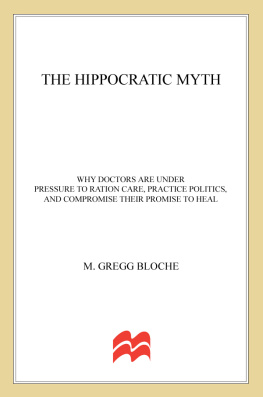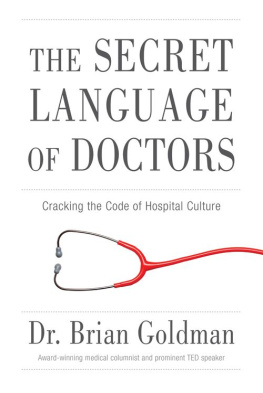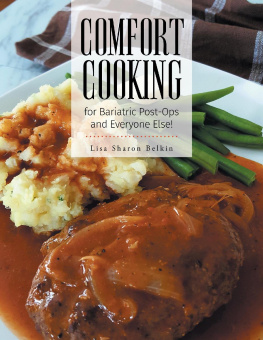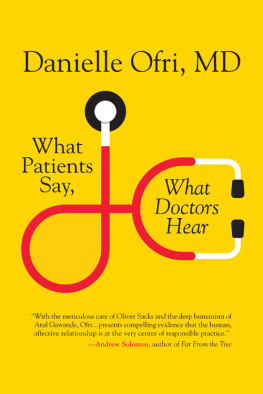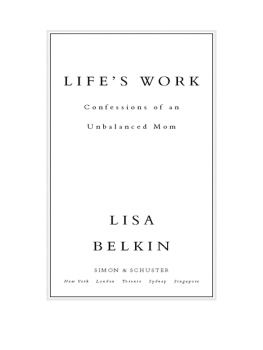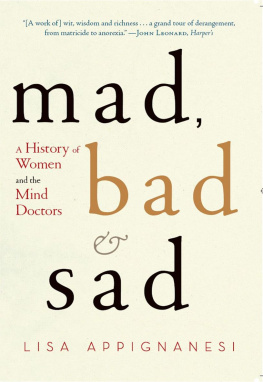Lisa Belkin - First Do No Harm: The Dramatic Story of Real Doctors and Patients Making Impossible Choices at a Big-City Hospital
Here you can read online Lisa Belkin - First Do No Harm: The Dramatic Story of Real Doctors and Patients Making Impossible Choices at a Big-City Hospital full text of the book (entire story) in english for free. Download pdf and epub, get meaning, cover and reviews about this ebook. year: 2021, publisher: Simon & Schuster, genre: Detective and thriller. Description of the work, (preface) as well as reviews are available. Best literature library LitArk.com created for fans of good reading and offers a wide selection of genres:
Romance novel
Science fiction
Adventure
Detective
Science
History
Home and family
Prose
Art
Politics
Computer
Non-fiction
Religion
Business
Children
Humor
Choose a favorite category and find really read worthwhile books. Enjoy immersion in the world of imagination, feel the emotions of the characters or learn something new for yourself, make an fascinating discovery.
- Book:First Do No Harm: The Dramatic Story of Real Doctors and Patients Making Impossible Choices at a Big-City Hospital
- Author:
- Publisher:Simon & Schuster
- Genre:
- Year:2021
- Rating:5 / 5
- Favourites:Add to favourites
- Your mark:
- 100
- 1
- 2
- 3
- 4
- 5
First Do No Harm: The Dramatic Story of Real Doctors and Patients Making Impossible Choices at a Big-City Hospital: summary, description and annotation
We offer to read an annotation, description, summary or preface (depends on what the author of the book "First Do No Harm: The Dramatic Story of Real Doctors and Patients Making Impossible Choices at a Big-City Hospital" wrote himself). If you haven't found the necessary information about the book — write in the comments, we will try to find it.
Lisa Belkin: author's other books
Who wrote First Do No Harm: The Dramatic Story of Real Doctors and Patients Making Impossible Choices at a Big-City Hospital? Find out the surname, the name of the author of the book and a list of all author's works by series.
First Do No Harm: The Dramatic Story of Real Doctors and Patients Making Impossible Choices at a Big-City Hospital — read online for free the complete book (whole text) full work
Below is the text of the book, divided by pages. System saving the place of the last page read, allows you to conveniently read the book "First Do No Harm: The Dramatic Story of Real Doctors and Patients Making Impossible Choices at a Big-City Hospital" online for free, without having to search again every time where you left off. Put a bookmark, and you can go to the page where you finished reading at any time.
Font size:
Interval:
Bookmark:
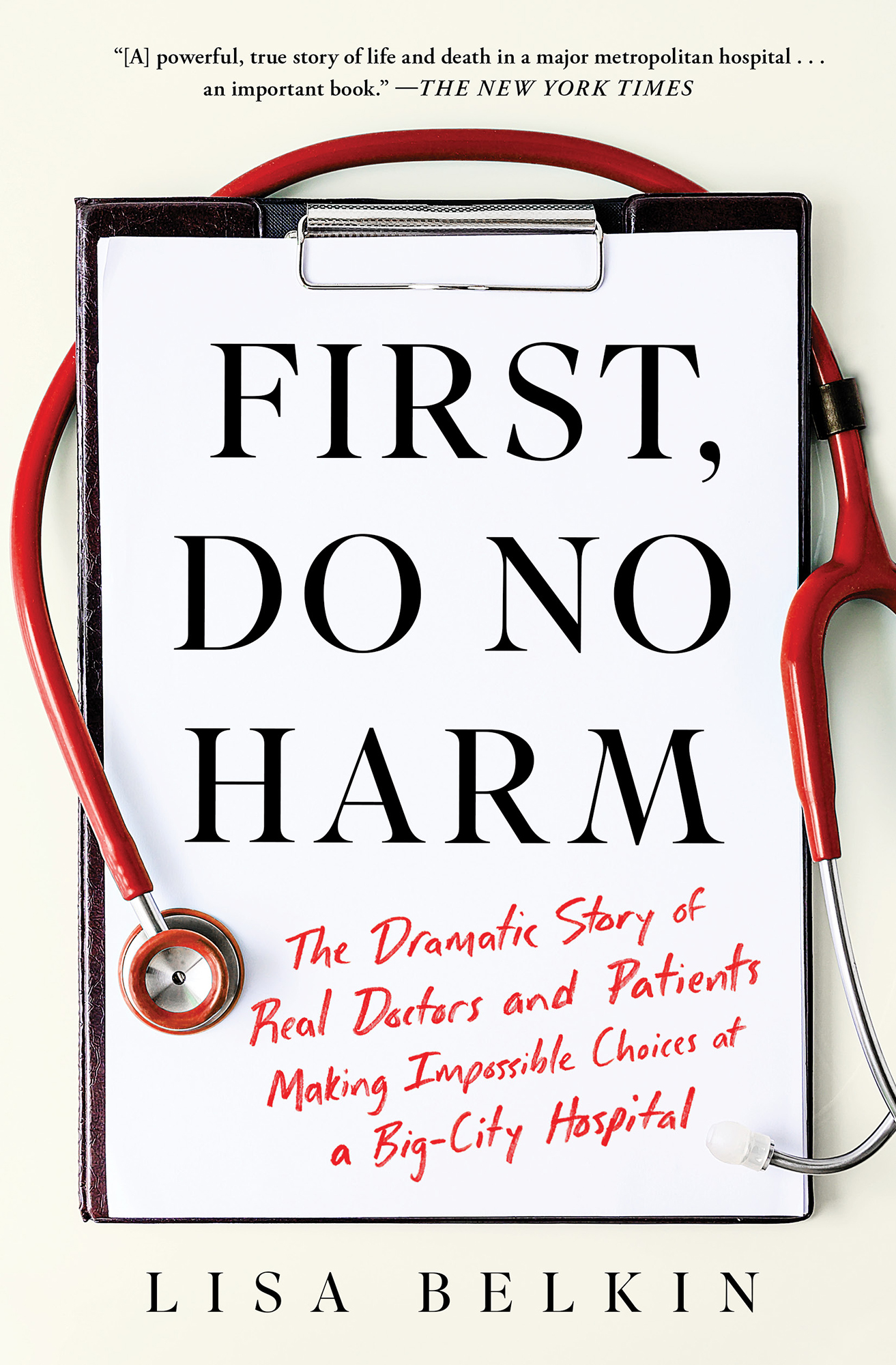

ALSO BY LISA BELKIN
Lifes Work: Confessions of an Unbalanced Mom
Show Me a Hero: A Tale of Murder, Suicide,
Race, and Redemption
To Bruce,
to Evan, and
to Grandma Pearl
The physician must be able to tell the antecedents, know the present, and foretell the futuremust mediate these things, and have two special objects in view with regard to diseases, mainly, to do good or to do no harm.
HIPPOCRATES
OF THE EPIDEMICS
I t was standing room only in Room 3485 the day the committee voted to let Patrick die.
Nearly three dozen people crammed the small windowless room, outnumbering the two dozen thinly padded chairs. After the seats were filled, latecomers propped themselves against the walls, careful to keep their distance from the dusty chalkboard. Whether sitting or standing, everyone was fidgeting. The emerald carpet only partly silenced the shifting and tapping of their feet.
Lin Weekss secretary, Ellen Nuez, always thinks herself lucky when she can book the committee into Room 3485. In Room 4487, the classroom one floor up, the blue-gray carpet is pocked with cigarette burns. Too seedy for her bosss pet committee. Room 5488, one floor higher still, is often reserved for CPR training, and its yellow-white stains, the ghosts of former puddles, are from the Clorox used to disinfect the mannequins mouths. Too seedy and too depressing. But in this room, Ellen thinks, the varied greens of the carpet, chairs, and chalkboard are calming, or as calm as one can ask for in a hospital. And some pretense of calm is important for these meetings about life and death.
Any soothing effect of the decor, however, was lost on Dr. Javier Aceves, the young pediatrician struggling with Patricks case. He sat at one end of the long wooden table, with his back to the door and his tired eyes scanning the audience of committee members. Following procedure, he began the session by reciting the basic facts, speaking in the shorthand monotone that is expected at meetings in hospitals.
Patrick Dismuke is a fifteen-year-old boy, well known to this committee, who is currently in the pediatric critical care unit on a ventilator, he said. His current hospitalization began two months ago, and this is his second prolonged hospitalization this year
He neednt have bothered. Everyone in the room knew Patrick. In fact everyone at Hermann Hospital knew Patrick. He had been a patient there for all of his fifteen years, and during that time he spent more days in the hospital than out of it. He had been operated on at least twenty times, probably more, but somewhere along the way his doctors lost count. Although each operation lengthened his life, none came close to curing him.
Patrick was born with Hirschsprungs disease, a disorder of the digestive tract, and after years of surgery to snip out parts of his intestine, he was left unable to digest his food. His was a severe case, and his life was hanging by a literal threada thin tube that dripped nutrients and medicines into his veins while he slept. Like most invasions of the body, this one wasnt perfect: He needed the line to live, but the line itself could kill him. Because it broke the barrier between blood and air, it was a bacterialaden Trojan horse, opening the door to infection and allowing it to overwhelm his body. In turn, the fight against the bacteria caused as many problems as it solved. The constant use of antibiotics provided ideal breeding ground for yeast and other types of fungi.
During the pauses between infections, the veins that held Patricks lines would become irritated to the point of collapse, until all the easily reached ones were useless to him. When tubes couldnt be threaded from outside, surgeons opened him up and threaded them from inside. During the last operation the plastic tube was stitched directly into his heart.
Through all this, Patrick was making history. Not the front page headline kind (though, never the shy one, he would have liked that), but the type of news that fills the 20,000 medical journals published worldwide every year. His IV nutrients werent meant to feed anyone for more than a short period of time, certainly not for fifteen years, and, as far as anyone knew, this was as long as anyone had lived on the milky yellow contents of the squishy plastic sacks. As Javier put it: Were winging it one day at a time.
The question before the committee was how many more days to wing it. As they spoke, Patrick was upstairs on a ventilator suffering from pneumonia, with a tube down his throat to help him breathe. He was conscious, and he was miserable. His feeding line was working in fits and starts, clogged by infection. He was being simultaneously kept alive and tortured by a nightmare of an antifungal drug called amphotericin B. Over the years, patients unlucky enough to use the drug have renamed it Amphoterrible, or Shake and Bake. The ampho causes violent fevers, which in turn cause chattering chills. It also tends to linger in the kidneys, eating away at the tissue.
For both these reasons doctors dont use the drug a day longer than it takes to kill the infection. Three weeks is considered tolerable, six weeks is of concern, twelve weeks is really too long, but the alternativefree rein for the infectionis still worse than the attempt at a cure. By the time this committee meeting was called, Patrick had been on ampho for eighteen months.
Hell need a new line soon, Javier said near the end of his little speech. We know hell need another one after that and another one after that. Do we keep opening his chest over and over? Without the new line hell starve. Which is worse?
He looked up from his notes, folded his hands, and waited for an answer.
Medicine, specifically hospital medicine, is about meetings. Many are as unscheduled and unstructured as doctors gathering with a patients family in the hallway to get their consent for surgery. Others are more official but stop short of requiring seatsmorning rounds, for instance, where the staff walks from bed to bed to bed, allowing those who were on call all night to update those who were at home asleep.
And then there are the full-blown meetings, with membership and agendas and chairmen. It is a telling measure of bureaucracy and economics at Hermann that as many as half its beds are sometimes empty but its conference rooms are often double-booked. Even as the committee decided on the fate of Patrick, another group milled outside, waiting to use the room. Every so often someone at Hermann tries to make a master list of committees and gives up, stymied by the fact that few administrators can remember all the meetings they attend. There was talk several years ago of starting a Committee on Committees to whittle down the number, but that was one group that was never formed. It probably would have been lost, anyway, a lone time slot on a cluttered calender.
There are ever more meetings because there are ever more decisions, and many of them are choices that no human being, with or without a medical degree, should be asked to make. Time was when medicine could do very little for critically ill or dying patients. Now it can do too much. Where to draw the line is the subject of a broad, heated debate throughout the country, a debate that becomes louder with each new medical miracle or impossible case: Should a Michigan doctor be allowed to hook desperate patients to a suicide machine? Should the state of Oregon be permitted to deny expensive organ transplants to the poor? Should a fertilized egg, in deep freeze in a laboratory in Tennessee, be considered a child? If so, who gets custody when Mom and Dad divorce? Should a Florida man be sent to prison for helping his disease-ravaged wife to die? Should a Missouri hospital refuse to withdraw life support from a comatose young woman named Nancy Cruzan even though her family believes there is no hope? Should a Minnesota hospital insist on withdrawing life support from a comatose older woman named Helga Wanglie despite the fact that her family believes there is still hope?
Font size:
Interval:
Bookmark:
Similar books «First Do No Harm: The Dramatic Story of Real Doctors and Patients Making Impossible Choices at a Big-City Hospital»
Look at similar books to First Do No Harm: The Dramatic Story of Real Doctors and Patients Making Impossible Choices at a Big-City Hospital. We have selected literature similar in name and meaning in the hope of providing readers with more options to find new, interesting, not yet read works.
Discussion, reviews of the book First Do No Harm: The Dramatic Story of Real Doctors and Patients Making Impossible Choices at a Big-City Hospital and just readers' own opinions. Leave your comments, write what you think about the work, its meaning or the main characters. Specify what exactly you liked and what you didn't like, and why you think so.




